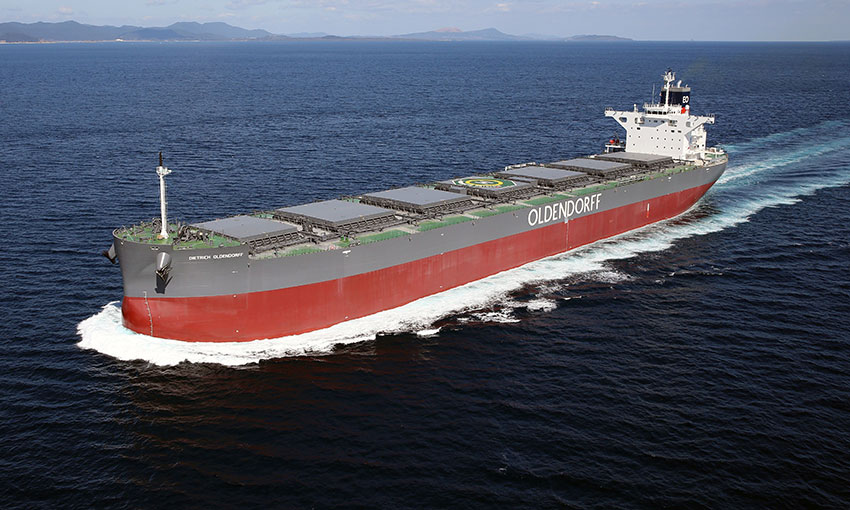THE largest vessel to call at New Zealand for logs is coming to the Port of Tauranga after a deal between South Pacific Shipping (SPS) and Oldendorff Carriers was brokered by Braemar ACM.
The first vessel to load is scheduled to be the MV Clemens Oldendorff, which has a capacity of 92,759 tonnes deadweight. The vessel is due to load from Tauranga at the end of October or early November.
Cameron Mackenzie from South Pacific Shipping said not only will this be the biggest vessel to load logs from New Zealand, loading a gearless ship is also a first for the New Zealand log export industry.
“Our objective is to make the supply chain as efficient as possible while maximising port throughput, as well as minimising the environmental footprint from the transportation of logs,” he said.
“Plus as market leaders, we wanted to be the first to participate in something that has not been achieved before.”
Bruce McFarlane of Braemar ACM said, “We saw an opportunity to bring together two major players from the logs trade and dry bulk shipping to create new economies of scale through the utilisation of the new mobile shore cranes and larger vessels at Tauranga”.
Oldendorff Carriers CEO Peter Twiss said, “We are extremely pleased to have been able to combine our commercial, operational and technical expertise from our Melbourne office, with our large fleet, to bring new economies of scale to our clients”.
Mr Mackenzie from SPS further commented “A Post-Panamax will carry underdeck twice the volume of a conventional logger, but will not require any fumigation by methyl bromide, as no logs will be carried on deck. This deal is also good for the environment.”
The logs are sourced from Pacific Forest Products (PFP) and supplied entirely from sustainable plantation forests. The bigger vessels will allow ISO Stevedoring to use their new high-capacity shore cranes, improving both loading speeds and stevedore safety.
The vessel will transport the logs from the Port of Tauranga with no deck cargo fumigation or lashing required, which will mean faster and more efficient loading that increases berth utilisation. Moving to the larger post Panamax vessel will allow the logs to be transported with a lower carbon output per CBM, compared to shipping on a regular handysize logger.”
If the post Panamax loading goes to plan, and freight rates remain proportionate to current levels, SPS said it would look to charter further Panamax vessels to capture ongoing gains obtained from supply chain efficiency and safety.





